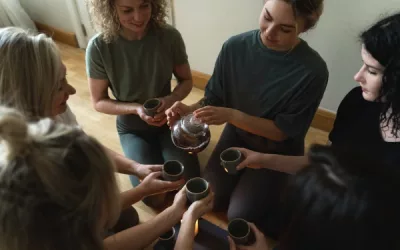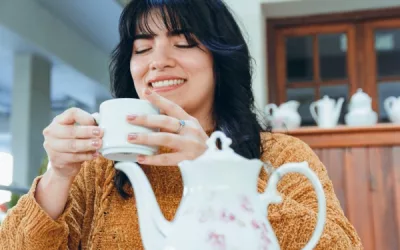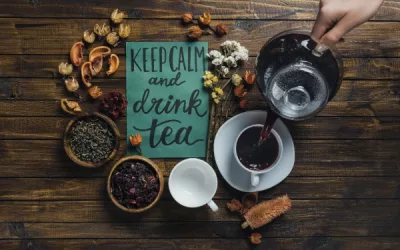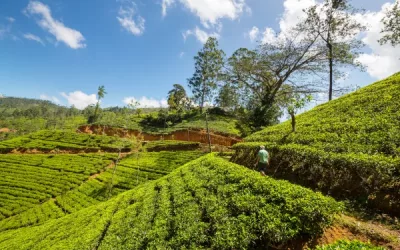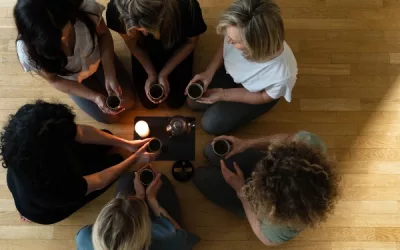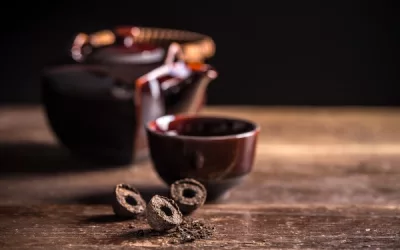Did you know that high tea originally served as a substantial meal for the working class in 18th-century Britain? Today, it has transformed into a delightful social event, steeped in culture and tradition. Understanding high tea is essential not only for appreciating British heritage but also for mastering the art of hosting your own elegant gatherings. This article will explore the history, etiquette, and essential tips for a successful high tea, ensuring you’re fully equipped to enjoy and share this charming custom.
Table of Content
- What is high tea?
- How did high tea originate?
- What are the essential elements of a traditional high tea service?
- What is the etiquette associated with high tea?
- How can I host a successful high tea party?
- What are some popular recipes for high tea?
- How Has High Tea Evolved Over the Years?
- What are some tips for enjoying high tea?
- Conclusion
What is high tea?
High tea is a traditional early evening meal, often served around 5 to 7 P.M., typically featuring hearty foods like meat pies, bread, and cheese. Unlike the lighter afternoon tea, which involves cakes and sandwiches, high tea is more substantial, reflecting its origins as a working-class meal. The term “high” refers to the dining table’s height, where it was eaten, not its elegance.
High tea, often confused with afternoon tea, holds a special place in British culture. Historically, it served as a substantial meal for working-class families during the 19th century. Typically, high tea is enjoyed in the early evening, around 5 to 7 p.m., and it combines elements of dinner and tea.
Unlike the lighter afternoon tea, high tea offers a more robust selection of savoury and sweet dishes. This meal is deeply rooted in British tradition, symbolising a time of gathering and relaxation after a long day.
The cultural significance of high tea cannot be overstated. It reflects the British emphasis on socialising around meals and represents a fusion of convenience and ceremony. Over time, high tea has evolved but still retains its charm, especially in rural areas and among those who cherish British customs.
What are the key differences between high tea and afternoon tea?
High tea and afternoon tea are often mistakenly thought to be the same thing, but they have distinct differences:
- Timing: High tea is served in the early evening, while afternoon tea is enjoyed between 3 and 5 p.m.
- Setting: High tea is more common in working-class homes, whereas afternoon tea is a more formal affair, associated with the upper classes.
- Menu: High tea includes heartier fare such as meats, pies, and breads, contrasting with the lighter sandwiches, scones, and pastries of afternoon tea.
- Purpose: High tea serves as a full meal, while afternoon tea is more of a light snack.
- Formality: Afternoon tea tends to be more formal and often features fine china and elegant settings.
High tea is often a family-oriented meal, bringing everyone together at the end of the day. It highlights the practical side of British dining culture, providing sustenance and comfort.
What are the traditional foods served during high tea?
High tea boasts an array of hearty and comforting foods:
- Meats: Cold cuts, meats pies, and sausages are common.
- Breads: Freshly baked bread or rolls, often accompanied by butter or spreads.
- Eggs: Boiled eggs are a staple.
- Cheese: Various British cheeses, sometimes served with pickles.
- Vegetables: Pickled vegetables or simple salads.
- Desserts: Fruit cakes, sponge cakes, and other sweets.
- Beverages: Strong black tea, often sweetened and with a splash of milk.
These traditional foods highlight the practicality and sustenance that high tea aims to provide. The inclusion of both savoury and sweet items ensures a well-rounded meal.
What is the cultural significance of high tea in Britain?
High tea holds a prominent place in British culture, especially as a symbol of unity and daily ritual:
- Family Gatherings: High tea brings families together to share a meal and discuss their day.
- Tradition: It represents a cherished British tradition, passed down through generations.
- Hospitality: High tea showcases British hospitality, often extending a warm welcome to guests.
- Resilience: Originating in working-class homes, high tea signifies the British spirit of resilience and adaptability.
- Identity: It remains a proud element of British identity and cultural heritage.
High tea is not just about the food; it’s about the experience and the sense of community it fosters. It’s a time to pause, reflect, and connect with loved ones.
In the 19th century, Queen Victoria made afternoon tea fashionable among the upper classes, but high tea remained a steadfast tradition for the working population. The practice was particularly popular in industrial regions, where it provided necessary sustenance after a long day in the factories. This tradition underscores the British ability to blend practicality with a sense of ceremony.
High tea, with its robust menu and rich cultural history, offers a unique glimpse into British traditions and the importance of family and community.
How did high tea originate?
High tea, often confused with the more delicate “afternoon tea,” comes from the working-class traditions of 18th-century Britain. Unlike afternoon tea, which is a light snack, high tea is a more substantial meal. Usually, it includes robust foods like meat pies, bread, and cheese. This meal was typically served after a hard day’s work, offering nourishment and a chance to socialise.
The term “high tea” comes from the higher table (the dining table), where this meal was served. This contrasts with “afternoon tea,” served at lower lounge tables. High tea evolved along with the industrial revolution, reflecting the changing social dynamics and the need for hearty sustenance at the end of the day.
Key historical milestones in the evolution of high tea
Below is a table that outlines the key historical milestones in the evolution of high tea. The table includes the dates, descriptions, and significance of each event to help understand the social context and changes over time.
| Date | Event Description | Significance |
|---|---|---|
| Early 1700s | Introduction of tea in Britain | Tea became a popular beverage, replacing ale and gin |
| Mid 1700s | Working-class adoption of tea | Tea became accessible and popular among the working class |
| Late 1700s | Industrial revolution | Increased working hours necessitated a more substantial evening meal |
| Early 1800s | High tea becomes a staple | High tea included meats, bread, and other hearty foods |
| Mid 1800s | Distinction between high tea and afternoon tea | Afternoon tea becomes an upper-class tradition |
| Late 1800s | Social gatherings centred around high tea | High tea becomes a social activity for the working class |
| Early 1900s | Decline due to changing social habits | The rise of other dining traditions led to a decline in high tea |
Understanding this table helps you grasp how high tea’s evolution reflects social and economic changes over the centuries. The table shows the shift from mere sustenance to a social tradition.
What is included in a traditional high tea?
High tea isn’t just about tea; it’s a full meal. Traditional high tea often features a mix of sweet and savoury items. Here’s what you can expect:
- Meat pies or Cornish pasties
- Bread and butter
- Scones with jam and clotted cream
- Cheese and cold cuts
- Pickles and chutneys
- Rich fruitcakes or Victoria sponge cakes
A traditional high tea is hearty and aims to satisfy after a long day of work. It offers a range of flavours, from the savoury meats to the sweet cakes, providing something for everyone.
How to host your own high tea party?
Hosting your own high tea can be a delightful experience. It involves more than just preparing food; it’s about creating an inviting atmosphere and engaging in good conversation.
- Choose a variety of foods: Include both sweet and savoury items.
- Set a cosy table: Use a dining table to stay true to tradition.
- Brew quality tea: Offer a selection of teas, including black, green, and herbal varieties.
- Serve in style: Use proper teapots, cups, and plates.
- Create ambience: Add flowers, soft lighting, and music to set the mood.
Hosting a high tea is a wonderful way to bring people together. It allows for a relaxed yet engaging environment where everyone can enjoy hearty food and good company.
In the 19th century, Queen Victoria popularised afternoon tea, which was more of a high-society event held between lunch and dinner. However, her influence indirectly distinguished high tea as a working-class meal. During the industrial revolution, the rise of factories created long working hours, making a substantial evening meal necessary. Thus, high tea became the go-to solution for hard-working individuals.
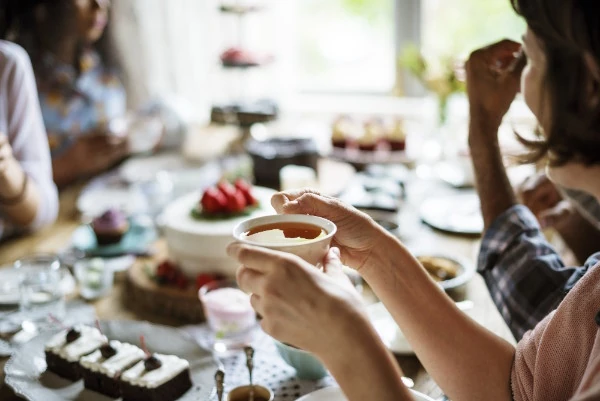
What are the essential elements of a traditional high tea service?
Alright, you fancy hosting a high tea, do you? Let’s dive right into the posh world of this quintessentially British tradition, and don’t fret – we’ll keep it simple. High tea isn’t just any afternoon snack; it’s an elegant affair that involves specific types of food, beverages, and a unique serving style with impeccable presentation.
What types of food are typically served at high tea?
Ah, the food – the heart and soul of any high tea. You’re looking at an array of delectable treats that could make anyone’s mouth water:
- Sandwiches: Think cucumber sandwiches (crustless, because we’re sophisticated), smoked salmon, egg and cress, and ham with mustard. These are your savoury staples.
- Scones: Light, fluffy, and warm. Serve them with clotted cream and strawberry jam for that perfect British touch.
- Pastries: Little tarts, eclairs, and assorted pastries add a sweet note.
- Cakes: Miniature cakes like Victoria sponge, Battenberg, and fruit cakes are a must.
- Biscuits: Traditional shortbread and other biscuits can round off the selection nicely.
The beauty of high tea isn’t just in the taste; it’s the variety. You get a bite of everything – savoury, sweet, and everything in between.
How should high tea be presented?
Now, onto the presentation, darling. High tea is all about elegance and flair. It’s not just about slapping some food on a plate and calling it a day.
- Three-tiered Stands: The iconic three-tiered stand is your best friend. Savouries go on the bottom, scones in the middle, and sweets on the top.
- Fine China: Dig out that bone china set Grandma bequeathed you. Cups, saucers, and plates all coordinate, offering a touch of class.
- Table Setting: Crisp, white tablecloths, linen napkins, and polished silverware set the stage.
- Flower Arrangements: Fresh flowers (nothing too overpowering) add a lovely touch to your setting.
- Place Cards: If you’re feeling extra fancy, place cards add a personalised element to the gathering.
Remember, the devil is in the details. A beautifully set table makes everyone feel like they’re part of something special.
What are the common beverages served with high tea?
Finally, let’s wash down all that glorious food with the right drinks. High tea isn’t high tea without the beverages – and no, a can of fizzy drink doesn’t cut it.
- Black Tea: Earl Grey, Assam, and Darjeeling are the classics. Serve them with milk and sugar, or a slice of lemon.
- Green Tea: For your health-conscious mates, green tea is a fresh and lighter option.
- Herbal Tea: Chamomile, peppermint, or rooibos cater to those who prefer caffeine-free choices.
- Coffee: Even though it’s called “high tea,” some prefer a good brew of coffee. Offer a pot of freshly brewed coffee alongside the teas.
- Sparkling Wine: Champagne or a lovely Prosecco can add a bit of bubbly joy to the occasion.
Tea is more than just a drink; it’s the very essence of the entire experience. So, brew it right, serve it hot, and keep topping up those cups.
Now, let’s hop back in time for a bit of context. Did you know that the tradition of high tea dates back to the early 19th century? It was Anne, Duchess of Bedford, who’s often credited with inventing the afternoon tea ritual.
Back then, dinner was served fashionably late around 8 p.m., and a peckish Duchess couldn’t quite wait that long. She began having tea and snacks at around 4 p.m. to stave off the hunger pangs, and soon started inviting her friends to join her. It’s these little gatherings that eventually transformed into the high tea we know and love today.
So, whilst you’re nibbling on that scone and sipping your tea, doff your imaginary hat to Anne. That gal had the right idea!
What is the etiquette associated with high tea?
Let’s dive into the labyrinth of high tea etiquette – it’s like hardly necessary rocket science, but let’s be honest, some folks still manage to turn it into a comedy of errors. Here’s how not to be that person.
Proper seating arrangements
In the world of high tea, there’s something rather regal about how you park your backside. The host sits at the head of the table (surprise, surprise), and if you’re not the host, don’t plonk yourself there! Let’s not let democracy intrude here – some traditions mean a world of difference.
Serving order
Before you go digging into those mouth-watering scones, remember Granny’s golden rule – serve others first. It’s not an all-you-can-eat buffet, so don’t be jumping ahead like a kid in a candy store. The eldest guest usually gets served first, followed by the ladies, and then the gentlemen. Politeness is the name of the game, folks.
Dining manners
Talking about the scones again, because frankly, they’re the stars of the show. Don’t hack them apart like a caveman; gently break them with your fingers. And for heaven’s sake, use a knife to spread the clotted cream and jam – no one wants your grubby finger marks in the common dish.
Dress code
If you think high tea means turning up in your pyjamas with a mug of builder’s brew, think again. People dress up for these occasions – think smart casual, leaning towards formal. No one’s saying tuxedos, but leave the flip-flops and tank tops at home.
Conversation etiquette
This isn’t the time to start sharing your latest conspiracy theories or political rants. Keep the chat light – discuss the weather, the absurd price of avocados, or even last night’s football. It’s about enjoying each other’s company, not causing a diplomatic incident.
What are the key etiquette rules to follow during high tea?
High tea is slightly fancy but mostly fun if done right. Here are the golden rules:
- Seating: Host at the head, guests distributed politely.
- Serving: Serve the eldest and ladies first.
- Eating: Break scones with fingers, spread with a knife.
- Dress code: Smart casual to formal – no flip-flops!
- Conversation: Keep it light and friendly.
Not too hard, right? The aim is to enjoy yourself and make others comfortable.
How should guests behave during a high tea?
Channel your inner Downton Abbey character – maybe minus the drama. Your behaviour should be the epitome of politeness and munificence. So, what’s expected?
- Politeness: Say please and thank you. Basic stuff.
- Patience: Wait your turn to be served. No elbowing.
- Gentlemanly/Ladylike: No burping or licking fingers.
- Sociability: Engage in conversations. Don’t be like a furniture piece.
- Respectfulness: Respect others’ space and opinions.
A subtle blend of charm, elegance, and common sense should see you through without any faux pas.
Is there a specific dress code for high tea?
Oh, absolutely. Showing up in trackies would be like attending the Queen’s Garden Party in a banana costume. Here’s the lowdown on what to wear:
- Smart Casual: Think sundresses, skirts, fitted trousers, and blouses for women.
- Classy Yet Comfortable: Men can sport blazers or button-down shirts, and absolutely no flip-flops.
- Hats: Optional, but those who fancy themselves a modern-day Audrey Hepburn, go ahead.
Dressing up makes the event feel special – like you’re stepping into a little slice of British tradition.
Back in the 1800s, Duchess Anna of Bedford was the pioneer of high tea. She found herself rather “hangry” in the late afternoons. So, she began sneaking a pot of tea and light snack in her boudoir. Eventually, she started inviting friends over to share this clandestine feast, and thus, high tea became a social event.
The simple delight of a cup of tea and a snack turned into a charming, civilised affair with a smidgen of pomp and a dollop of cheese (sometimes literally). Buckle up and keep the tradition fancy, folks!
How can I host a successful high tea party?
Looking to host a successful high tea party and impress your friends with British elegance? You’ve come to the right place, my friend. Hosting a high tea is like conducting a symphony; it’s all about the right notes: the menu, the ambiance, the timing, and the attendees. Let’s dive into each aspect so you can create an event that’s the talk of the town, or at least your group chat.
First things first, planning the menu. Remember, high tea isn’t just about stuffing your face with scones. It’s a delicate balance of savoury and sweet, with a bit of sophistication thrown in. Next, setting the table properly adds to the charm. And don’t forget the invitations! Timing is critical – too late, and you’ll just get dinner; too early, and it’s basically lunch. Finally, you want to create a warm and welcoming atmosphere, so people feel like they’ve stepped into a Jane Austen novel, minus the drama.
Ah, the menu – the pièce de résistance. A good high tea menu is the key to your guests’ hearts (and stomachs). It should be a mix of savoury and sweet delicacies with a touch of class. Here’s what you’ll need:
- Finger sandwiches: Think cucumber, smoked salmon, and egg and cress – the more sophisticated, the better.
- Scones: No high tea is complete without scones, clotted cream, and jam. These are the Holy Trinity of high tea.
- Pastries and Cakes: Little éclairs, mini tarts, and a selection of cakes. Variety is the spice of life, after all.
- Tea Selection: Offer a variety of teas, including classics like Earl Grey, Assam, and Darjeeling. Throw in some herbal options for the rebels of the group.
- Savoury Snacks: Sausage rolls, quiche, and maybe some cheese straws – a little bit of umami to balance all that sugar.
A high tea menu that’s well-thought-out can elevate the entire experience. The trick is to offer a good mix of textures and flavours, so no one leaves your party feeling like they’ve eaten their weight in sugar alone.
How do I create the right atmosphere for a high tea?
Now, let’s talk ambiance. If you want your guests to feel like aristocracy, you’ve got to get the atmosphere spot on. Trust me, this is where you turn your living room into a Downton Abbey set.
- Table Setting: Use fine china, if you’ve got it. Otherwise, anything elegant will do. Don’t forget the tiered cake stands and a proper tea set.
- Decorations: Fresh flowers are a must. Centrepieces with seasonal blooms will add a touch of colour and freshness. Throw in some elegant linens and lace doilies, and you’re good to go.
- Lighting: Soft, warm lighting works best. For daytime teas, natural light is your friend. If it’s a bit later, use some tasteful lamps or even candles.
- Music: A bit of classical music or soft jazz in the background sets a refined tone without being overbearing.
- Scents: A light, floral room fragrance can make guests feel like they’ve walked into an English garden.
Creating the right atmosphere is about making your guests feel special, welcomed, and maybe just a smidge envious of your hosting skills.
What are some tips for inviting guests to a high tea?
Inviting guests can be an art form. You don’t want to spam people with texts, but you also don’t want to send out a medieval scroll with a wax seal (unless you’re into that sort of thing).
- Invitations: Go for a bit of class. A printed card or a stylish e-vite works wonders. Keep the design elegant and the wording straightforward.
- Timing: Send your invitations out at least 2-3 weeks in advance. People are busy; they need time to clear their schedules.
- RSVP: Always include an RSVP to know how many to cater for. You don’t want to run out of cucumber sandwiches halfway through.
- Theme: If you have a theme, let your guests know. Themed attire or a dress code can add an extra layer of fun.
- Follow-Up: A polite follow-up a week before the event can help ensure everyone remembers to attend.
Getting the invitations right ensures your guests feel appreciated before they even arrive. Plus, it sets your party off on the right foot.
Now, picture this: It was 1840, and Anna, the Duchess of Bedford, always felt that something was missing between lunch and dinner. Tea in hand, a few snacks, and voilà – the concept of afternoon tea was born. She invited friends over, and before long, this became a trend among the upper echelons of British society. It just goes to show that even small innovations can turn into beloved traditions. So, who knows? Your high tea could become the new benchmark among your friends.
Ready to host your high tea? Time to unleash your inner Duchess and make it an event to remember!
What are some popular recipes for high tea?
Alright, let’s dive into the world of high tea. No frilly doilies or pinkies up required, but don’t tell your grandma I said that. High tea is a marvellous blend of sweet treats, savoury bites, and delightful beverages. It’s the perfect excuse to gather friends and show off your culinary skills. Let’s break it down:
Sweet treats
Ah, the sweet section. The real reason anyone shows up to high tea in the first place. Classic delights that warm the soul and transport you to a cosy cottage in the British countryside.
- Scones with clotted cream and jam: No high tea is complete without these crumbly beauties. Serve with a generous dollop of clotted cream and strawberry jam. Pro tip: Remember to argue about whether cream or jam comes first.
- Victoria sponge: Named after Queen Victoria herself, this fluffy cake layered with cream and jam is the epitome of elegance.
- Lemon drizzle cake: A zesty delight that’s as refreshing as it is delicious. The citrusy kick will cut through all the other rich goodies.
- Macaroons: Those little colourful meringue-style biscuits. Not strictly British, but they bring a touch of class and a burst of flavour to the table.
- Battenberg cake: A checkerboard delight wrapped in marzipan. It’s as much a feast for the eyes as it is for the palate.
These sweet options won’t just satisfy your guests’ sugar cravings but also serve as the centrepiece of your high tea spread. Layer up and let the compliments roll in.
Savoury dishes
On to the savoury section. We need something to balance out all that sugar, right? Imagine robust flavours mingling with delicate textures. Here’s what should be on your radar:
- Finger sandwiches: Think cucumber, smoked salmon, egg and cress, or ham and mustard. The secret: crustless, neatly cut, and bite-sized.
- Scotch eggs: A hard-boiled egg wrapped in sausage meat, breaded and fried. Heartiness in every bite.
- Mini quiches: Go wild with fillings—cheese and bacon, spinach and feta, or mushroom and thyme. The options are endless.
- Savoury scones: Cheese, chive, and perhaps a hint of mustard. These are the yin to your sweet scones’ yang.
- Sausage rolls: Flaky pastry filled with seasoned sausage meat. A true British classic that’s as welcome as a cup of Earl Grey on a rainy day.
These savoury bites will keep your guests coming back for more, balancing out the sweetness and adding a touch of variety.
How can I adapt traditional recipes for high tea?
Tradition schmeed-ition. It’s great, but it doesn’t mean you can’t have a bit of fun with it. Here’s how you can put your own twist on these time-honoured recipes:
- Swap ingredients: Instead of classic cucumber sandwiches, try smoked turkey with cranberry. Your guests will appreciate the nod to tradition with a modern twist.
- Dietary adaptations: Gluten-free scones, dairy-free cream, or vegan finger sandwiches. Being inclusive will make everyone happy and your high tea memorable.
- International fusion: How about incorporating some sushi rolls or mini croissants with ham and cheese? Mix it up and bring a global flair to your spread.
- Personal touches: Personalise cakes with initials or themes. Tea parties with a bit of individuality are always a hit.
- Healthy options: Add fruit skewers or veggie sticks with hummus. It’ll balance out the indulgence and keep the health-conscious folks smiling.
By adapting these recipes to suit modern tastes and dietary needs, you’ll keep the tradition alive while making it relevant for today’s crowd. Plus, it keeps you from being branded as someone stuck in the past.
Now, let’s weave in a little tale from history to wrap things up nicely. Back in the 19th century, Anna, the Duchess of Bedford, is credited with inventing afternoon tea. She would get a bit peckish around 4 pm, and with dinner being fashionably late (around 8 pm), she needed something to tide her over.
She started inviting friends to join her for an additional meal at 5 pm in her rooms at Belvoir Castle. The ladies would enjoy a selection of small treats and tea. This practice caught on like wildfire, and within no time, it became a full-blown trend amongst the socialites of England. The rest, as they say, is history.
So there you have it—the secrets to a cracking high tea. Happy hosting, and may your tea be ever-steaming and your scones ever-fluffy!
How Has High Tea Evolved Over the Years?
Alright, grab your cup of Earl Grey and let’s dig into how the iconic British high tea has transformed like an impressive banner headline over the years. Traditionally, high tea was a hearty meal enjoyed by the working class after a long day of work.
Now? It’s got the glamour, Instagram filters, and possibly even avocado toast. High tea’s journey is nothing short of fascinating, influenced by changing social customs, cultural infusions, and the ever-persistent trend of ‘what’s hot right now’.
Back in the day, high tea was a no-nonsense, let’s-get-down-to-business meal. Think robust meats, savoury pies, bread, and LOTS of tea. It was designed to refuel the labourers after a day in the mines or fields.
Fast forward to the 21st century, and it’s evolved into a more sophisticated affair, almost indistinguishable from its humble origins, complete with fine china, meticulously arranged pastries, and finger sandwiches. Five-star hotels and classy tearooms have turned it into a symbol of elegance rather than sustenance.
Social media hasn’t just put high tea on a pedestal but added glitter and confetti to the mix. Sharing a snap of your picturesque high tea is almost a rite of passage on platforms like Instagram. It isn’t just tea and snacks anymore; it’s an entire aesthetic category.
How Has The Perception of High Tea Changed In Modern Times?
Now, let’s spill the tea on how modern folks see high tea today. Spoiler alert: It’s no longer just for the toiling masses or the blue-collar crowd.
- Upscale Experience: Today, high tea is synonymous with luxury and decadence. Think five-star hotels, chic urban cafes, and even rooftop gardens.
- Social Event: It’s also become a social status marker, mostly attended by those looking for an elegant outing. It’s almost the British equivalent of brunch.
- Special Occasions: High tea has become a favoured choice for baby showers, birthday parties, and posh hen-do’s.
- Instagram-Worthy: You’ve probably seen those drool-worthy pictures filling up your social media feeds.
- Health Conscious: There’s even a nod to health these days, with gluten-free, vegan, and low-sugar options available.
The modern perception of high tea is a blend of luxury, leisure, and Instagram fame. It’s the kind of thing you do when you want to feel fancy and maybe a bit nostalgic.
What Are Some Contemporary Trends In High Tea?
High tea has swapped its overalls for designer duds. Today’s trends pretty much spell out the evolution we’re talking about:
- Fusion High Tea: Mixing in culinary elements from different cultures. Imagine sushi served alongside traditional English scones.
- Themed High Tea: From Alice in Wonderland to Harry Potter, themed high teas are all the rage.
- Sustainability: Many places are now emphasising locally sourced ingredients and eco-friendly practices.
- Health and Wellness: High tea menus that feature matcha, chia seeds, and superfoods.
- Bespoke Experiences: Customisable high tea options to cater to your specific tastes and dietary needs.
All these trends echo a desire for a more personalised and unique high tea experience, going beyond the conventions and diving into innovation.
How Do Cultural Influences Impact High Tea Today?
We’ve now got a whole lot more spices in our high tea arsenal. The influx of global cultures into British society has left an indelible mark on this cherished meal:
- Indian Chai and Snacks: Given Britain’s history with India, it’s no wonder elements like spicy chai and samosas are making a special appearance.
- Japanese Influence: Matcha tea and mochi desserts have found a comfy home alongside the traditional scones and clotted cream.
- Middle Eastern Flavours: Pomegranate seeds, pistachio baklava, and rose water-infused treats are adding a new flair.
- American Trends: Yes, you can now spot mini-burgers, mac and cheese bites, and cheesecake on high tea menus.
- Fusion Desserts: Picture a passion fruit tartlet with a touch of Thai basil. Unexpected, but delightful.
These cultural influences make high tea a melting pot of global culinary delights, a mash-up that keeps folks coming back for another round.
To wrap up this high tea exploration, let’s take a quick time-travel jaunt. Anna, the Duchess of Bedford, is often credited with creating the afternoon tea ritual in the early 19th century.
She started the tradition of taking tea and snacks in the late afternoon to quench those pesky hunger pangs between lunch and dinner. Little did she know, she was setting the stage for one of the most beloved British traditions. If she had Instagram back then, she’d likely be its biggest influencer!
What are some tips for enjoying high tea?
Let’s dive into the art of high tea enjoyment. Britain might be known for its rainy weather, but it’s also celebrated for this delightful tradition. Lucky for you, there are plenty of ways to savour the occasion. So, grab your pinky finger, and let’s make your next high tea a memorable one.
Enjoying high tea can be as easy as eating a scone – if you know the ropes. The key is to immerse yourself in the experience. From being mindful of each bite to savouring every sip of tea, there’s so much to enjoy. Let’s break it down.
How can I enhance my enjoyment of high tea?
To turn high tea into a feast for the senses, focus on:
- Mindfulness: Pay attention to the textures, aromas, and flavours of the various delicacies. Take the time to really taste each bite and sip.
- Flavour appreciation: Notice the intricacies of each dish. Whether it’s a cucumber sandwich or a macaron, there’s a lot more flavour there if you slow down and appreciate it.
- Social interaction: Engage with your companions. High tea is as much about the company as it is the food. Chat, laugh, and make memories.
- The presentation: The allure of high tea also lies in its elegance. Delight in the presentation of the tea set, the tiered trays, and the dainty cutlery.
Mindfulness isn’t just for yoga classes. When you’re digging into a creamy scone or taking a bite of a finger sandwich, be present. Leave the phone alone for a bit – your Instagram followers can wait. Savour the, flavours, enjoy the ambience, and relish the company. Elevate your tea-sipping game and let’s make your next high tea moment an absolute treat.
What should I focus on during high tea?
High tea is about more than just the food. Here are some aspects to focus on:
- The tea itself: You’re not sipping the Queen’s favourite Earl Grey for nothing. Explore the varieties, and don’t be afraid to try something new.
- Pairings: Pay attention to which teas pair best with which treats. It’s like wine pairing but with fewer vineyard snobs.
- The setting: Absorb the atmosphere. Is it a cosy lounge or a fancy hotel? Each has its charm.
- Etiquette: High tea isn’t just about eating; it’s about the performance. From stirring your tea to holding your cup, engaging in the little rituals enhances the experience.
Dive into the tea selection, because it’s a whole world on its own. Do a bit of research or ask your server for recommendations. You might find your new favourite blend. Each setting has its own unique charm; whether it’s an upscale hotel or a quaint tea room, the atmosphere enriches the experience. And hey, try not to be that one guest who sips with a thunderous slurp.
How can I make the experience more memorable?
To make high tea truly unforgettable:
- Dress up: Don a fancy outfit. You don’t have to look like you’re off to meet the Queen, but dressing up adds a special touch.
- Themed teas: Host or attend themed teas. From Alice in Wonderland to a garden party, themes can add a playful twist.
- Photographs: Capture the moment. Whether it’s the food, the decor, or the happy faces around you, a few photos can help cement the memory.
- Special invitations: Bring along someone special. Whether it’s a close friend, a loved one, or someone new, the company can make all the difference.
Think about creating a little tradition around it. Maybe it’s a monthly indulgence or a special treat for birthdays. Doing this can turn high tea from a one-time event into something you look forward to time and again. And don’t be afraid of a little creativity. Try a themed tea party – Mad Hatter, anyone?
During World War II, Winston Churchill found solace in his daily afternoon tea amidst all the chaos. It wasn’t just about the tea, but the ritual, the sense of normalcy, and the comfort it provided. Amidst the toughest times, the simple elegance of high tea offered a brief respite, reminding everyone of better days. So, if it helped Churchill stay grounded, imagine what it can do for your busy life. Enjoy your high tea!
Conclusion
As I reflect on the delightful complexity of high tea, I’m reminded of its rich history and the many elements that make it such a cherished occasion. We’ve explored how high tea, distinct from its afternoon counterpart, serves as a social hub, characterised by hearty food and conviviality rather than mere snacks and delicate pastries.
The cultural significance of high tea within British traditions cannot be overstated, as it offers a space for connection and conversation across various social classes, evolving significantly since its inception in the 18th century.
The table detailing the evolution of high tea emphasises the socio-historical pathways that have shaped this beloved tradition. Each milestone highlights a shift in societal norms and practices, serving as a reminder of our historical context.
Moreover, we’ve delved into the essentials of high tea service, from the types of food and beverages to the etiquette that governs the gathering. Understanding these elements is crucial for anyone looking to host an authentic experience.
Hosting a successful high tea party is an art, reflecting careful planning and heartfelt attention to detail. The steps I’ve shared, from menu creation to setting the right atmosphere, will surely aid you in orchestrating a memorable gathering that your guests will treasure.
As we embrace modern interpretations of high tea—integrating diverse cultural influences and contemporary trends—it’s vital to honour the essence of this tradition. The practice of pausing to appreciate our food and the company we keep allows us to savour not just the flavours but the moments shared.
In closing, I invite you to consider this: high tea is more than a meal; it’s an opportunity for connection, reflection, and joy. As I often ponder, when was the last time you took a moment to indulge in the simple pleasures of life with those you cherish? Perhaps it’s time to plan your next gathering and make high tea a part of your continued journey through British culture and social enjoyment.
Resources
- High Tea, Low Tea: the British Cultural Expansion of Tea, 1600-1900
- Historical comparison of tea culture in China, Britain, and Japan
- Tea and tea drinking: China’s outstanding contributions to the mankind
- Just your cup of tea: the history (and health claims) of the nation’s favourite brew
- Herbal Teas and their Health Benefits: A Scoping Review
- From the Wild to the Cup: Tracking Footprints of the Tea Species in Early Modern China


